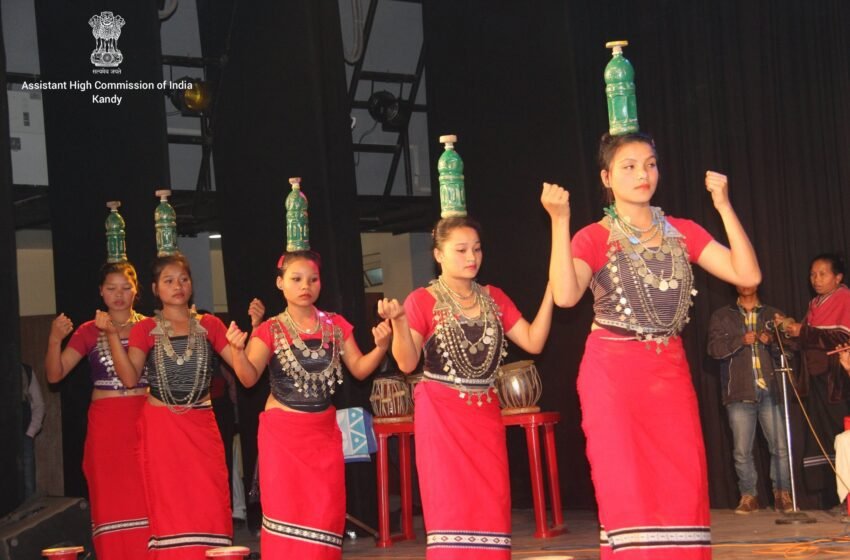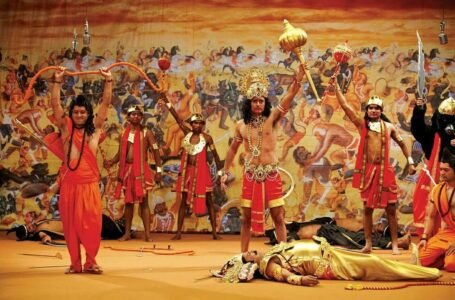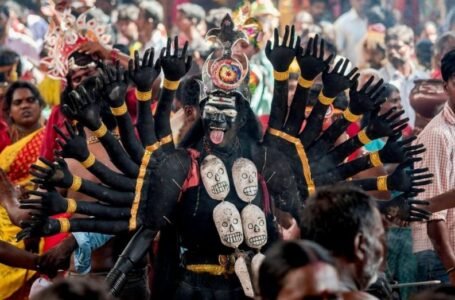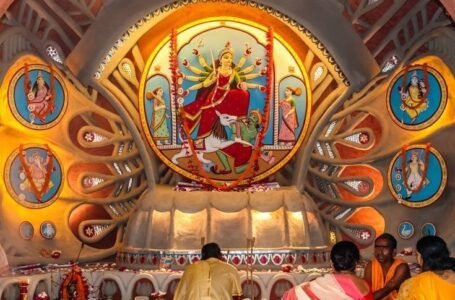Hojagiri: The Enchanting Balancing Dance of Tripura

Dance has always been an integral part of cultural identity, reflecting the traditions, beliefs, and artistic expressions of various communities. Among the many vibrant folk dances of India, Hojagiri stands out as a unique and mesmerizing performance, deeply rooted in the traditions of the Reang (Bru) tribe of Tripura. This extraordinary dance form, known for its impeccable balancing acts, is performed by women and young girls, creating a visual spectacle that captivates audiences.
Hojagiri is more than just a dance—it is a ritual, a story of devotion, and a symbol of resilience. Despite its rich history and cultural significance, it is now facing challenges due to modernization, dwindling patronage, and a shift in the socio-economic conditions of the Reang community. This article explores the origins, significance, performance techniques, costumes, and the current status of Hojagiri, shedding light on why this dance must be preserved for future generations.
Origins and Cultural Significance
Hojagiri is closely linked to the spiritual and agricultural traditions of the Reang tribe. This tribe, also known as the Bru, is one of Tripura’s oldest indigenous communities, recognized as a Scheduled Tribe in India. They have a deep connection with nature, practicing shifting cultivation (Jhum farming) and worshiping deities associated with prosperity and fertility.
The dance is performed during the Hojagiri festival, which coincides with Laxmi Puja (Mailuma festival), celebrated on the full moon night after Durga Puja, typically on the third day of Dussehra. The festival is dedicated to Goddess Mailuma (Laxmi), the deity of prosperity, seeking blessings for a bountiful harvest and the well-being of the community.
Hojagiri was originally known as Hodagiri, performed exclusively as a ritual offering during Maikhlungmo Puja. Over time, it evolved into a celebrated dance form that not only retained its spiritual essence but also became a means of artistic expression and cultural identity for the Reang tribe.
Performance of Hojagiri Dance
The Dance Formation and Movements
Hojagiri is performed by a team of four to six women or young girls, who exhibit remarkable balancing skills and rhythmic movements. Unlike most folk dances that involve extensive upper-body movements, Hojagiri is characterized by restricted upper-body motion while the lower body moves in a graceful wave-like rhythm.
Some key highlights of the dance performance include:
Balancing on an earthen pitcher: Dancers stand on a single earthen pitcher while moving in perfect synchronization.
Holding multiple props: They balance bottles on their heads, hold a lighted earthen lamp in their hands, and manipulate a cane-made rice washing tool (Baling).
Slow hip and waist movements: Unlike fast-paced tribal dances, Hojagiri follows a slow yet hypnotic flow, symbolizing the swaying movements of paddy fields in the wind.
Choreographed storytelling: The performance narrates the process of Jhum farming, from sowing seeds to harvesting, portraying the connection between the tribe and nature.
The synchronization of the dancers is key to the beauty of Hojagiri. The way they link arms, move in harmony, and balance their props with precision makes the performance awe-inspiring for spectators.
Role of Male Performers
While the dance itself is performed by women, male members of the Reang community contribute by singing folk songs and playing musical instruments. Their deep, rhythmic chants and the beats of the Kham (a traditional drum) and Sumui (bamboo flute) create an immersive experience, drawing the audience into the performance.
Costumes and Ornaments
The traditional attire of Hojagiri dancers is a testament to the artistic sensibilities of the Reang tribe. Their outfits are colorful, handcrafted, and adorned with intricate patterns, adding to the visual appeal of the dance.
Women’s Attire:
Pachra and Rea: The dancers wear a handwoven Pachra, a long piece of fabric wrapped around the body like a saree, with a short Rea blouse.
Jewelry: They wear coin necklaces, silver anklets, earrings, and armlets that reflect their cultural aesthetics.
Floral Decorations: Women often adorn their hair with fragrant flowers, symbolizing their deep connection with nature.
Men’s Attire:
The male singers and drummers wear a white loincloth and simple headgear.
They do not participate in the dance but enhance the performance through music and rhythmic chants.
The use of natural dyes and handmade fabrics in costumes adds to the authenticity of Hojagiri, making it a true representation of Tripura’s tribal heritage.
Musical Instruments and Accompaniment
Music is a crucial component of Hojagiri. The dance is accompanied by a combination of folk songs and traditional musical instruments, which include:
Kham: A large drum, played by striking both sides with hands, producing deep and resonant beats.
Sumui (Kshumu): A bamboo flute that provides a melodic tune to the performance.
Bamboo Cymbals: Small percussion instruments that add rhythm and energy.
The interplay of rhythmic beats, melodic tunes, and synchronized dance movements makes Hojagiri a spectacular artistic experience.
Hojagiri’s Decline and the Need for Preservation
Despite its rich history and captivating beauty, Hojagiri is slowly fading due to several challenges:
- Lack of Recognition: Unlike other Indian folk dances, Hojagiri has received little attention from mainstream cultural institutions, making it difficult for performers to sustain their art.
- Modernization: The younger generation is increasingly drawn towards urban lifestyles, leading to a decline in participation in traditional dance forms.
- Economic Challenges: The Reang community faces financial hardships, making it difficult for them to continue elaborate dance performances.
- Limited Cultural Showcases: Hojagiri is now primarily performed at government-sponsored events and cultural festivals, losing its original ritualistic context.
Steps for Revival
To preserve and promote Hojagiri, the following steps can be taken:
Government and NGO support: Financial aid, training programs, and performance platforms should be provided to Reang artists.
Incorporation into school curriculums: Teaching Hojagiri in local schools can encourage the younger generation to take pride in their heritage.
Cultural tourism: Showcasing Hojagiri as a tourist attraction can generate income for the performers while spreading awareness about the art form.
Digital documentation: Creating videos, documentaries, and online content about Hojagiri can help reach a global audience.
By taking these measures, Hojagiri can be revived and preserved, ensuring that future generations continue to witness this breathtaking art form.
Conclusion
Hojagiri is more than just a folk dance; it is a symbol of the Reang tribe’s culture, spirituality, and artistic excellence. The way the dancers balance props with ease, their rhythmic movements, and the soulful music make it a unique and unforgettable spectacle. However, with changing times, this beautiful tradition is at risk of being lost.
It Is crucial to recognize and support indigenous art forms like Hojagiri, ensuring they thrive in the modern era. By preserving this cultural gem, we honor not just the Reang tribe’s legacy but also India’s diverse and vibrant heritage.
Let us celebrate, cherish, and work towards the revival of Hojagiri, so that this balancing dance of Tripura continues to enchant audiences for generations to come.


